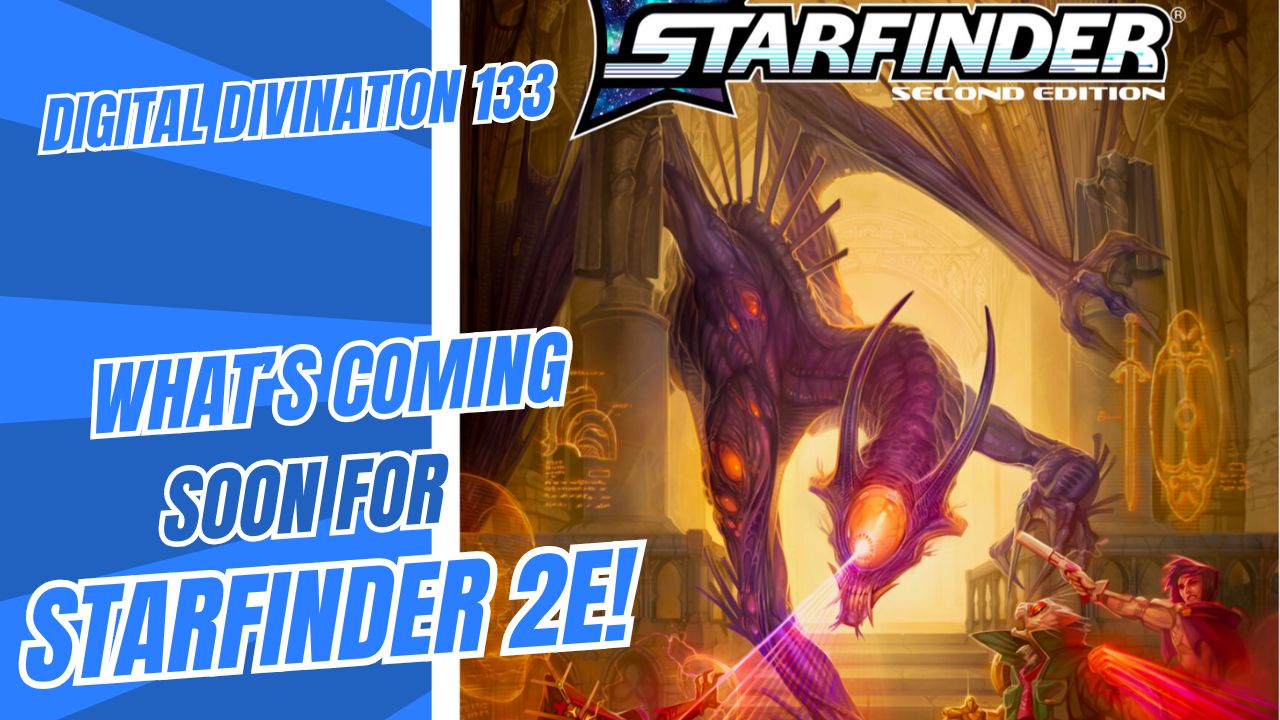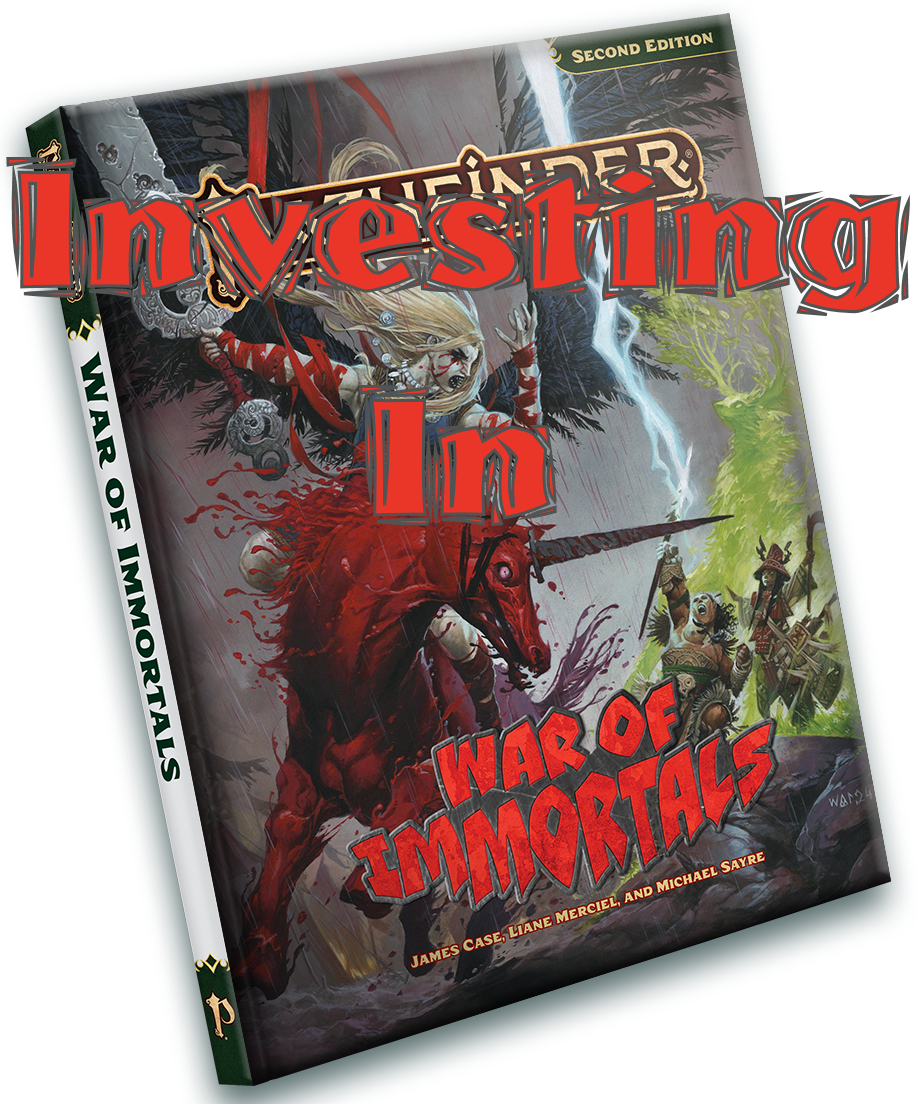Monsters are such an important part of Dungeons and Dragons (D&D) that they truly deserve their own core rulebook. Drawn from staples of fantasy, myth, legend, and the imagination of some highly creative game designers, the Monster Manual (MM) is a log of the bizarre beasts and iconic creatures you’re likely to encounter in a D&D session, or in your wildest dreams.
At a Glance
The scab shade of red and sinister cat’s eye on the cover gives away that there’s evil locked inside this book. The scales or carapace of the cover give the feeling that this book is alive and out to get you. Very true in many ways.
Without having counted, I’d wager that this book features more full colour photos than any other D&D sourcebook. And with good reason. Could a simple description of a Chaos Beast, Gibbering Mouther, or Grick do any of these creatures justice? And although we can get a good idea of what a dragon looks like without visual aids, the details that separate the dragons bring life to each race, from the blue dragon’s single massive horn to the gold dragon’s mustache-like tendrils.
It’s hard to pick a favourite drawing, but I’m going with the Assassin Vine. The desperate peasant who has clearly been caught off-guard struggles for his life again constricting vines and claw-like leafs close in on him.
Highlights
Templates
These things are awesome. Need to bump up the damage-taking capacity of a monster? Make it a Skeleton. Want to add a thematic twist to make an otherwise random encounter fit your adventure? Hello Fiendish Creature. Looking for a way to make one creature stand out in the crowd? Half-Dragon. Take any creature in the Monster Manual and you have three or four different templates that you can apply to it to jazz it up and bring new life to old monsters. The sneakiest of them all is the vampire template. No one sees it coming until they’ve been energy drained or negative leveled.
Creature Advancement
No creature is just a creature in the Monster Manual. If you really want a rust monster to challenge a fifteenth level fighter, all you need to do is pile on the Hit Dice, add a few feats, and make adjustments for its new, larger size. Improving a monster has never been easier, and limits the need to invent new monsters that are similar to lower CR existing ones.
Chock Full of Monsters!
Forget the nitpicking, the MM delivers exactly what it’s meant to: page after page of monsters. Second edition Monster Manuals made sure each new monster started its own page. We aren’t paying for white space anymore. One entry leads into another to maximize the monster/page count ratio. A major formatting advantage between the 3.5 and the third edition is that now templates are integrated with the monsters. I had a friend who was convinced vampires weren’t in the third edition MM because he stopped looking when he hit the animals chapter. It makes more sense the way it is now.
Low Points
Dragons
I’m sure I just lost some loyalty there. Hopefully there are still people reading to find my explanation.
Listing dragons as a low point of anything in Dungeons & Dragons is sacrilegious. So important are they that their name is in the title of the game. These are the creatures of such power and influence entire campaigns can be centered around them. What could possibly be a low point about them?
Well, there are twenty pages dedicated to the five evil chromatic dragons and five good metallic dragons. And unfortunately, all this is to pick apart the minor differences between the ten true dragons. Ultimately, dragon encounters are only separated by the breath weapon of the attacking dragon. Sure, each dragon has their gimmick ability, like a black dragon’s ability to corrupt water and a red dragon’s ability to locate objects. But these abilities are useful story hooks but rarely come into play during combat. They are in most other respects tactically the same, based on CR, of course. So a campaign with a lot of dragons has the same basic encounter over and over, with increasing difficulty.
Now, compare a dragon to the Behir, a creature that is dragon-like in as many ways as it is different. Huge scaly creature with a breath weapon and the ability to swallow creatures whole. But it also has the ability to rake, and constrict. If there were a standard dragon model that individual races differed from, then we’d have an interesting variety of creatures. Think about how different a black dragon encounter would be from a green dragon if the black dragon no longer had a fly speed but could turn invisible at will, and the black dragon no longer had a breath weapon but could rage as a Barbarian of its hit dice. Characters in these situations would have to consider much different options to defeat each foe. And the new abilities showcase the attitudes of the race, black dragons being cunning and malevolent, green dragons being belligerent.
I am willing to balk on this point. Who am I to suggest I could build a better dragon? I have played in a number of dragon-heavy adventures. The reaction to a dragon encounter quickly turned from fear and awe from the players to half-interested routine.
Naked Monsters
The Monster Manual is one of the only books I do not feel comfortable bringing into the grade school where I work. The Succubus, Dryad, Harpy, and Nymph all feature exposed nipples, sometimes through a clear layer of cloth, or times just hanging out.
While some of these creatures are thematically tied to sexuality, there is a difference between giving players the option to include a sexual element in their game and forcing it upon everyone that flips through the book. The Marilith is topless, but a well-placed weapon covers her exposed nipples just enough to be acceptable. Medusa has well-placed snakes. The Mermaid has a start shape floating like a magical censor bar. Exposed nudity can be avoided while still getting the point across.
Why is this so bad? Dungeons & Dragons is a male-dominated hobby, despite fantasy literature being greatly popular with females. Any inclusions of material that risks alienating female players should not make the cut, no matter how small. Moreover, young players are judged enough as it is for playing D&D. It’s a strange hobby and has unfortunately been linked to everything from suicide to Satanism by often ignorant sources. Including bare breasts in all-ages material does not make the game seem any more normal.
You may ask what the big deal is. Should D&D cater to those that prejudge the game? Ultimately no, someone that’s going to tease someone about being slain by an elf is going to do so regardless. But does it really benefit anyone? Is anyone happier that they can see a Harpy naked, or that a bark-skinned Dryad has nipples? For prosperity’s sake, keep the nudity to adult-oriented material like The Book of Vile Darkness and make sure the unmonitored books don’t need monitoring.
Almost Every Monster Has an Illustration
This blows my mind. I can accept that the animals and dinosaurs were passed on for pictures as most of us know what a cat and triceratops look like, and those that don’t can easily look it up. But what about the Derro? An interesting creature based on it’s description, I’d love to see what this mad midget looks like. But based entirely on it being overlooked for visual reference, I don’t believe I will ever use it. Sorry Derro.
Juicy Bits
I love goblins. I love that they’re small creatures that move at the speed of medium creatures. I love that their CR is two less than their hit dice if it has NPC levels. And I love how underestimated they are by PCs.
For Druids trying to decide on an animal companion, it’s hard to argue with the wolf. It’s ability to trip opponent for free after every successful bite, including the ones made as attacks of opportunities against previously tripped opponents getting up from prone, makes it extremely useful at preoccupying opponents.
Personal Experience
I’ve been DMing 3.5 since the handbooks came out, so needless to say I have a lot of experience the creatures in the Monster Manual. I think it’s more impressive to say that, even after regular sessions for four years, there are still plenty of creatures in the MM I have not used. Not just because it’s hard to fit aquatic monsters into a campaign, but just because there is so much in this book, that when combined with NPCs using PH races and classes, even a year long campaign only features a few new creatures prominently. And that’s before modifying them with templates.
Overall
The Monster Manual is Dungeon and Dragon’s muscle and adrenaline. It’s the cold cut in the sammich, without something to sit on and something else to hold it together, it’s just a chunk of meat. The importance of the familiar monsters found in the original 3.5 Monster Manual sets the standards. True, there are plenty of sourcebooks that offer monsters to challenge the PCs. Sure. you might not miss losing the owlbear or formians. Yes, you can make due with purple dragons and sand giants. But those that have fought and defeated the tarrasque are met with wide-eyed wonder from fellow players. Those that have fought the Crawling Head, also CR 20, are more likely to to be met with “What’s that?” and “Which book’s that from again?” The Fiend Folio, for the record. It’s just hard to picture D&D without orcs, dragons, skeletons, zombies, trolls, elementals, hydras, werewolves, medusa, ogres, unicorns, and more of the staples of fantasy fiction.
If You Liked This Book…
There are plenty of other books chock full of monsters. Monster Manual II is technically a 3rd edition book and not 3.5, but there is a free downloadable errata to get it up to date. Some vital monsters, like the Phoenix, are in that book.
Monster Manual III (not to be mistaken for Monster Manual 3.5, its predecessor and the upgrade from Monster Manual 3rd edition, also not to be mistaken for MM-III) is a fun but less standard sequel that many consider the Eberron MM. Still, there’s some stuff in there that’s worth a look.
The Monster Manual IV is a big departure from the previous MMs. It uses the new NPC format and provides sample encounters and information on the monsters based on PC knowledge skill checks. The stylistic changes are well thought out, but take some getting used to for people that really know the first three MMs.
The Fiend Folio is an evil-heavy book that mirrors the MM. There really isn’t much that separates it from the MM’s direct sequels.
The Draconomicon, Fiendish Codices, Lords of Madness, Libris Mortist, and Drow of the Underdark expand upon the information already provided for Dragons, Aberrations, Demons and Devils, the Undead, and the Drow, respectively.
Finally, the D&D Minis line of pre-painted fantasy miniatures often bases their figures on existing artwork. You can find your favourite monsters from the MM created almost exactly like their profile picture.




Leave a Reply